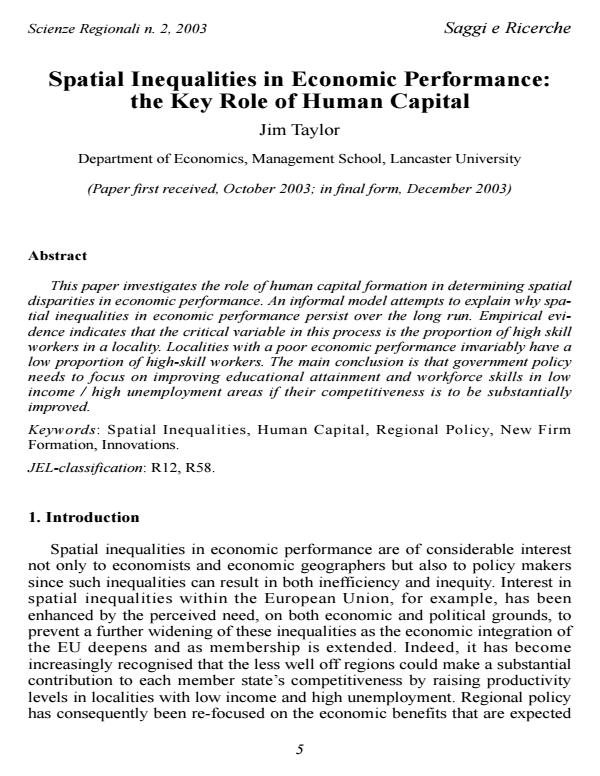Spatial inequalities in economic performance: the key role of human capital
Journal title SCIENZE REGIONALI
Author/s Jim Taylor
Publishing Year 1 Issue 2003/2
Language English Pages 23 P. File size 221 KB
DOI
DOI is like a bar code for intellectual property: to have more infomation
click here
Below, you can see the article first page
If you want to buy this article in PDF format, you can do it, following the instructions to buy download credits

FrancoAngeli is member of Publishers International Linking Association, Inc (PILA), a not-for-profit association which run the CrossRef service enabling links to and from online scholarly content.
This paper investigates the role of human capital formation in determining spatial disparities in economic performance. An informal model attempts to explain why spatial inequalities in economic performance persist over the long run. Empirical evidence indicates that the critical variable in this process is the proportion of high skill workers in a locality. Localities with a poor economic performance invariably have a low proportion of high-skill workers. The main conclusion is that government policy needs to focus on improving educational attainment and workforce skills in low income / high unemployment areas if their competitiveness is to be substantially improved.
Jim Taylor, Spatial inequalities in economic performance: the key role of human capital in "SCIENZE REGIONALI " 2/2003, pp , DOI: